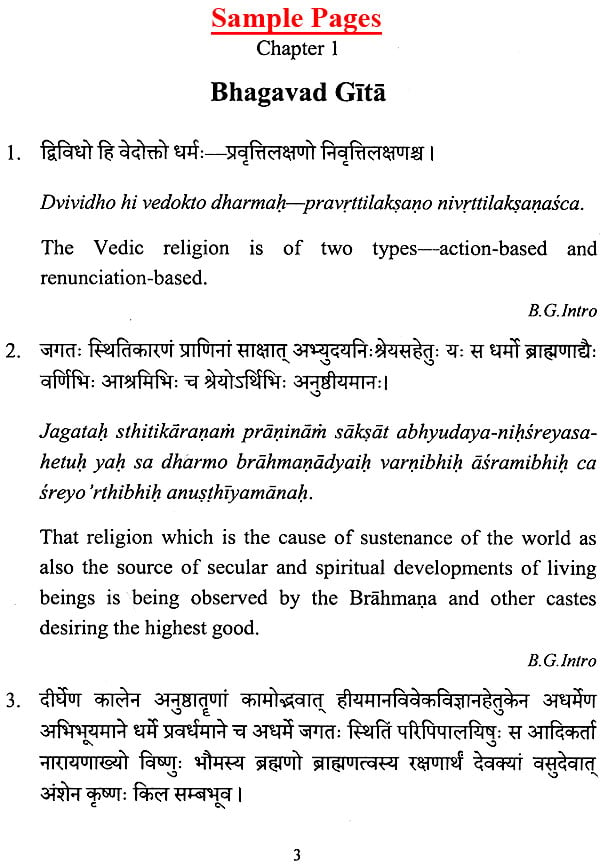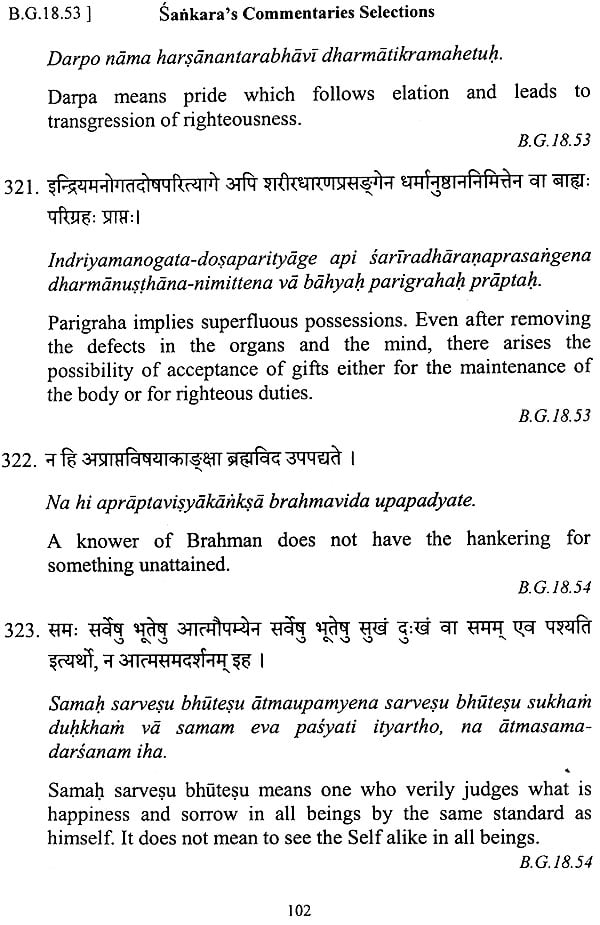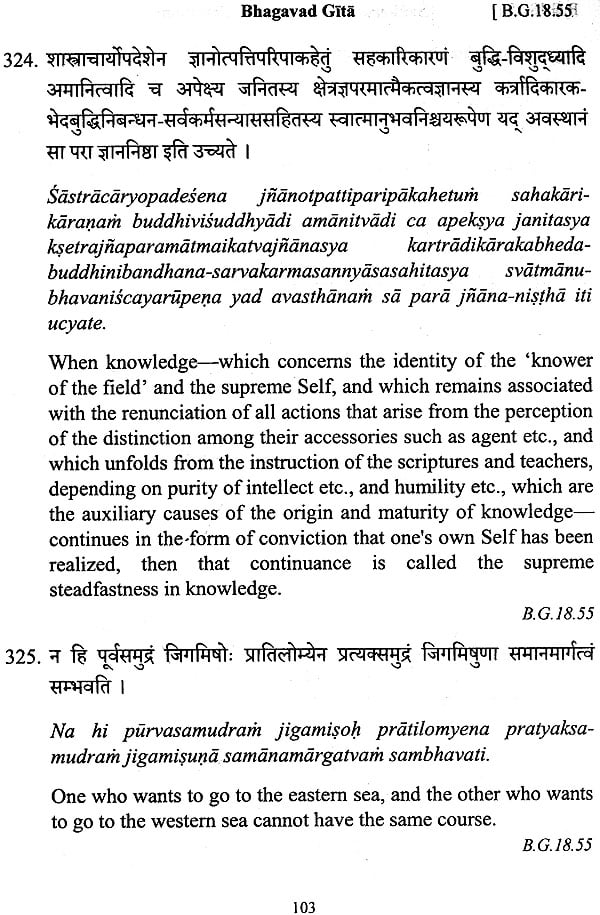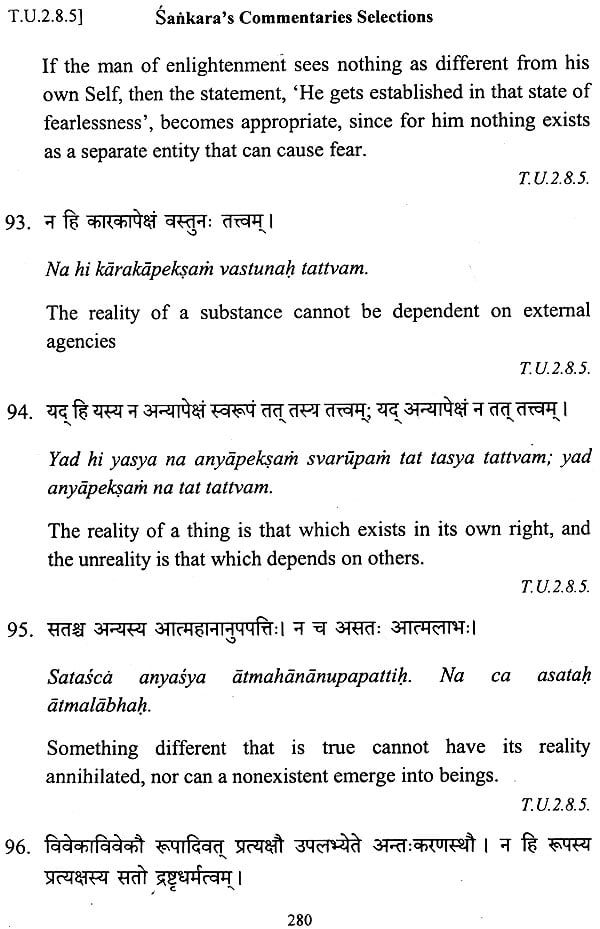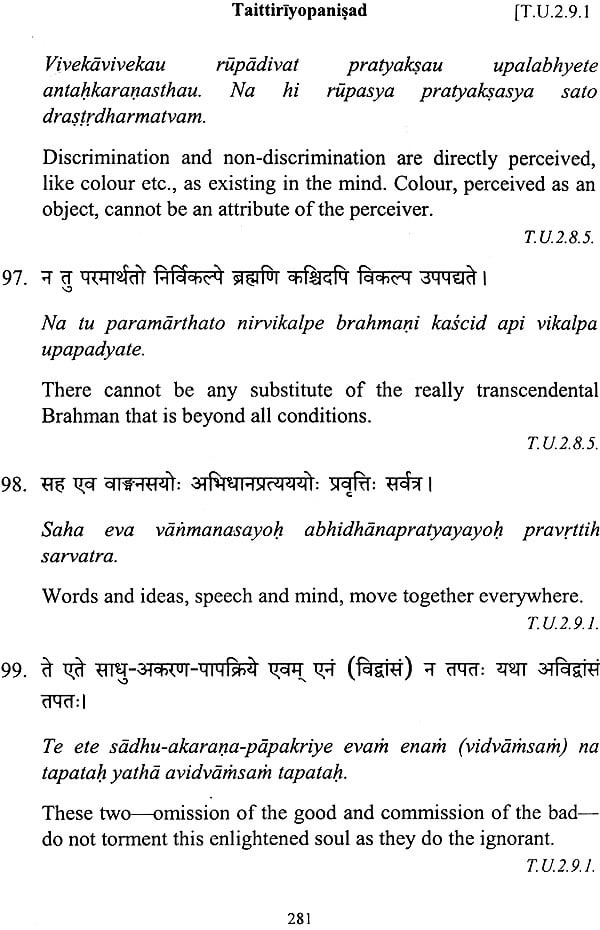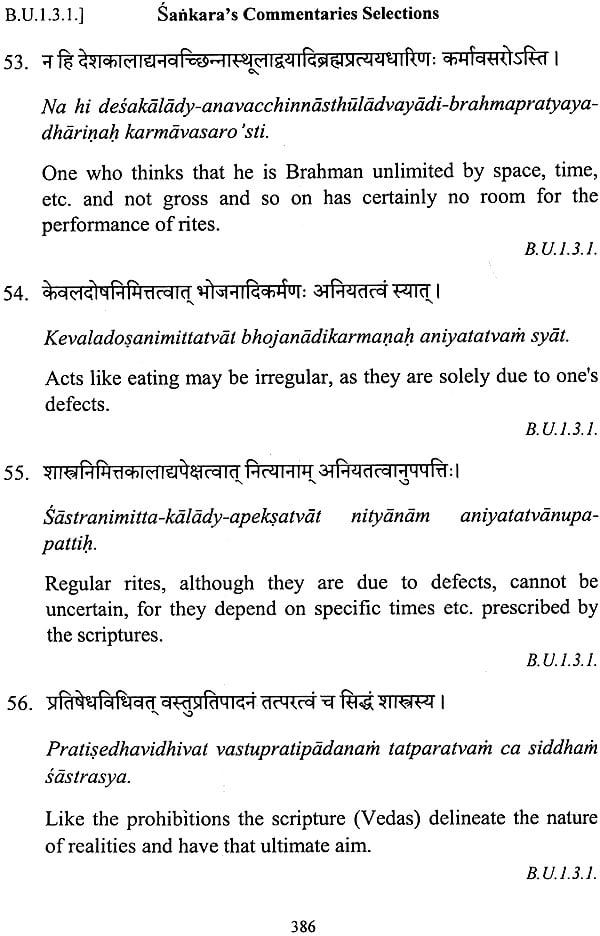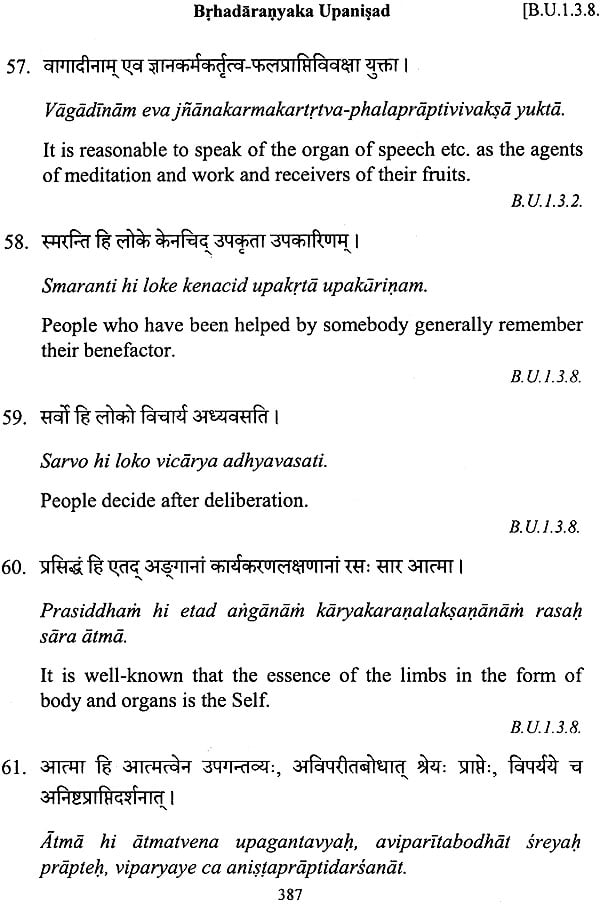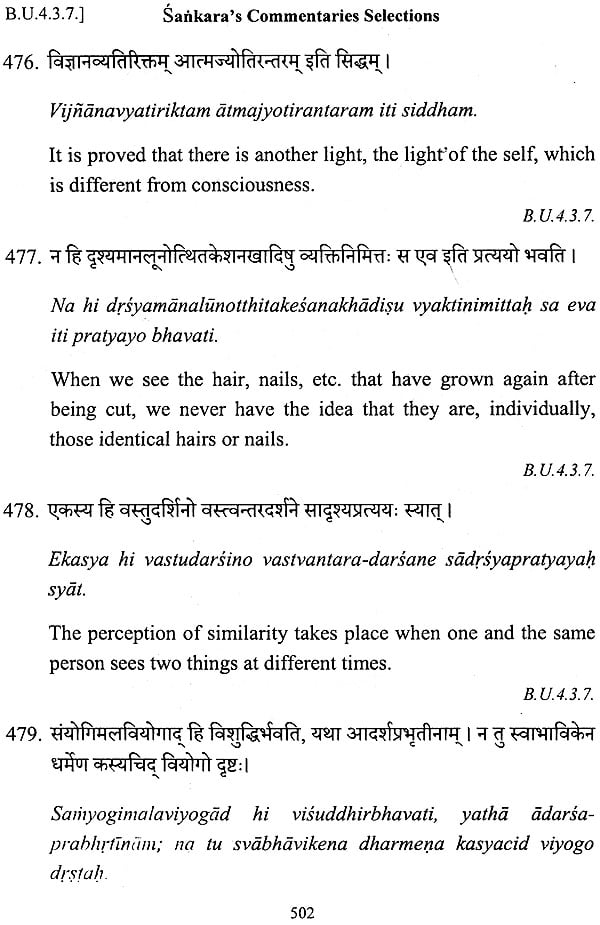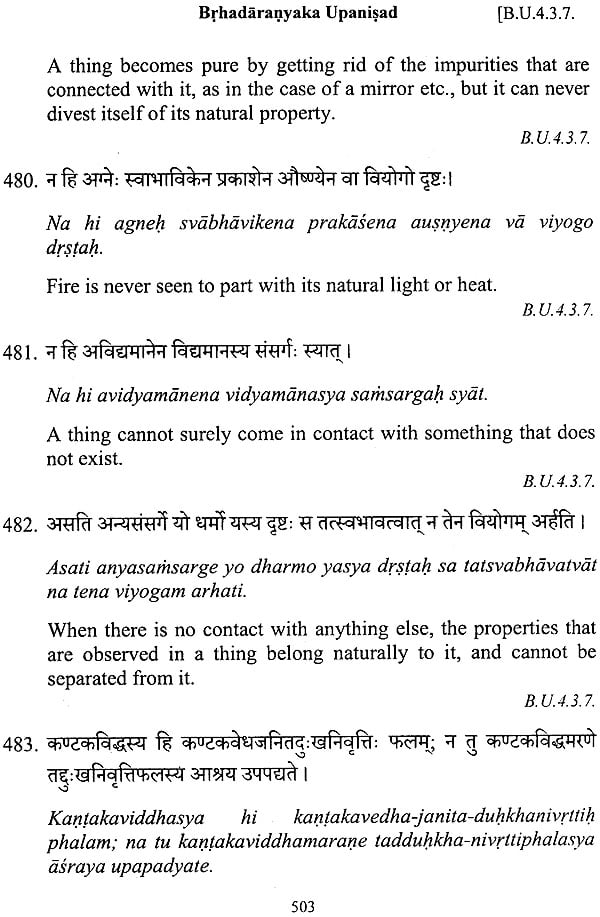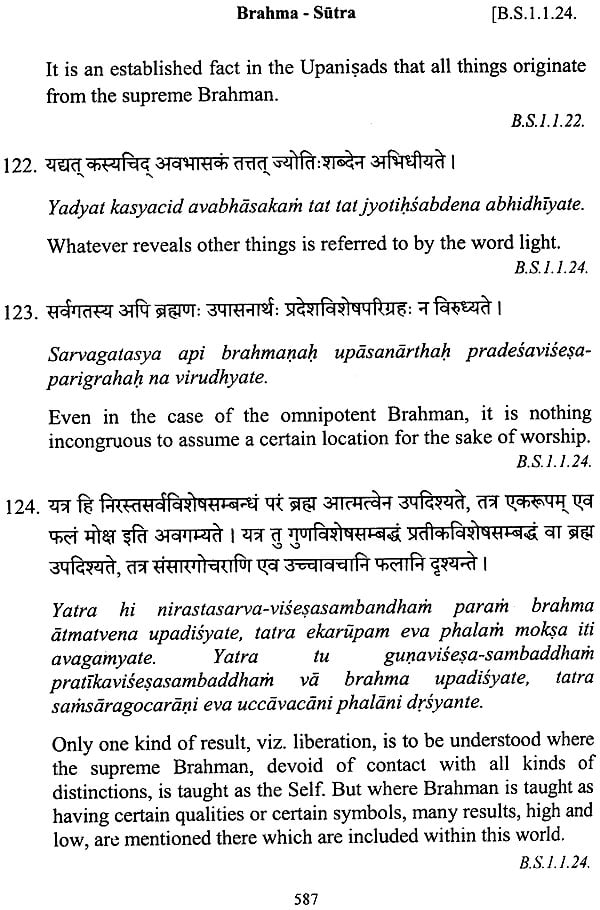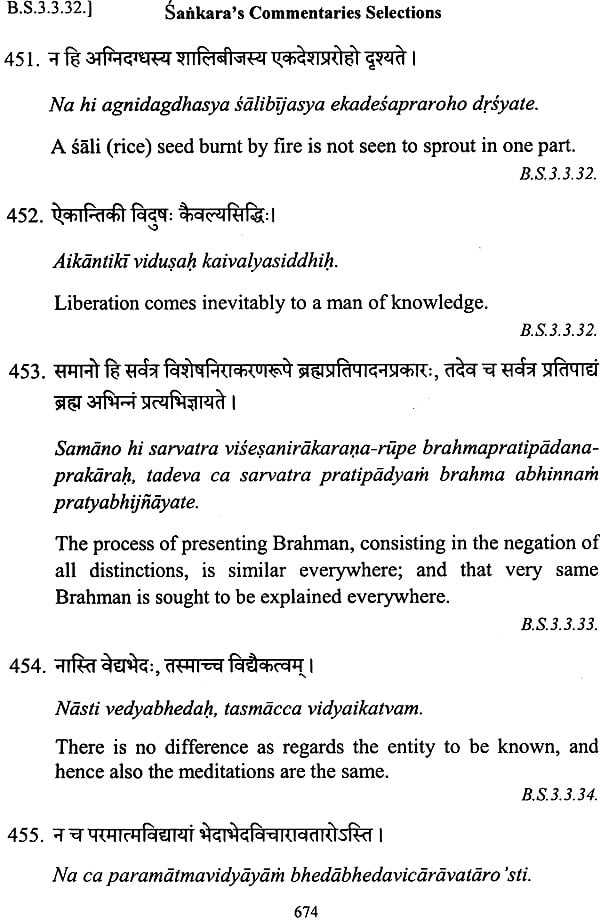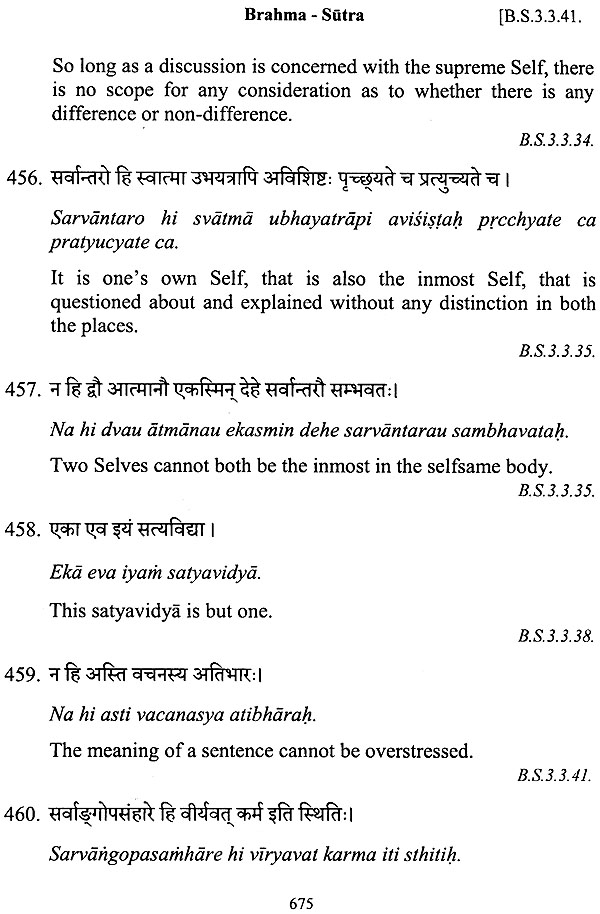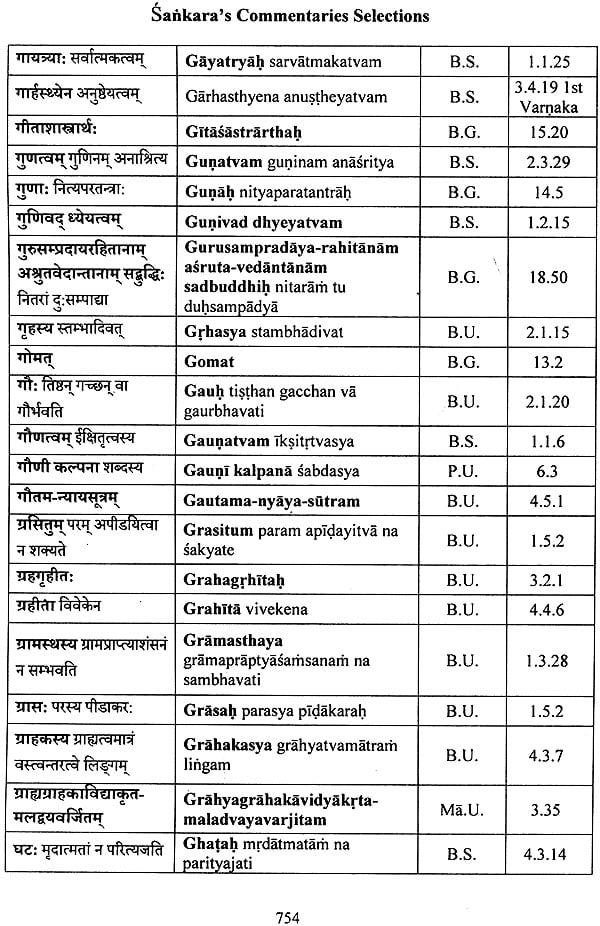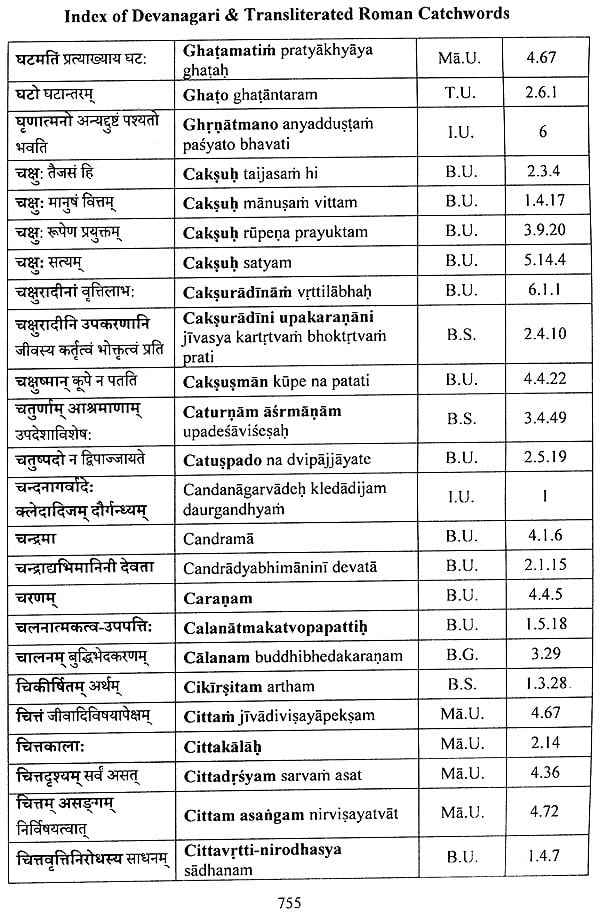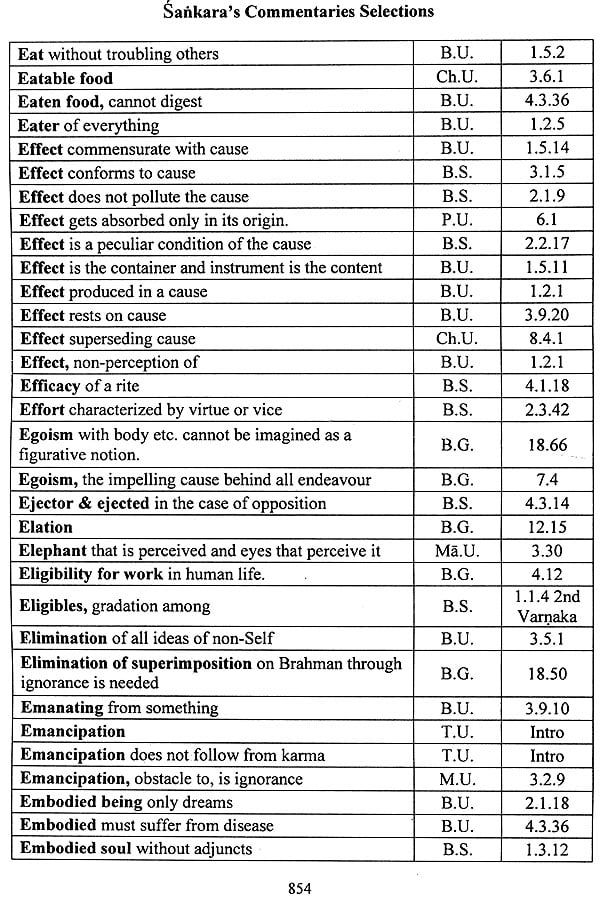
A Collection from Sankara's Commentaries on the Prasthana-Traya
Book Specification
| Item Code: | NAN766 |
| Author: | Swami Kritarthananda |
| Publisher: | Ramakrishna Mission Institute of Culture |
| Language: | Sanskrit Text with Transliteration and English Translation |
| Edition: | 2022 |
| ISBN: | 9789381325865 |
| Pages: | 927 |
| Cover: | Hardcover |
| Other Details | 9.5 inch X 7.5 inch |
| Weight | 1.60 kg |
Book Description
This book is a humble, or rather feeble, attempt to help the research students or scholars quickly find out the sources of valuable references cited by the world-renowned Advaita proponent Sri Sankaracarya in his commentaries on the three main pillars of Hinduism, well-known in Sanskrit as the Prasthana-traya. A keen perusal of the commentaries reveals innumerable dimensions of thought of the great commentator. The present author, while going through that monumental work, felt an inner urge to collect the important and memorable sentences from them and bring them out into a book form in order to simplify and promote further researches in the line of Advaita Vedanta.
About two thousand five hundred such signal sentences have been carefully culled from the Prasthana-traya commentaries to build up the text portion of this book. On scrutinizing the sentences collected it can be seen that there are chiefly three trends in them, viz., 1) inferential, 2) illustrative, and 3) definitive. The opponent's views have been avoided in this collection, since the purpose of the book is to highlight only Sankaracarya's views. However, in a few rare cases, where the opponent's argument contains some inherent truth universally accepted, that portion has also been included in this work, albeit with special reference.
This book covers fourteen chapters containing the whole gamut of the "rasthana-traya, namely, the Bhagavad Gita (smrti-prasthana,) the Upanisads sruti-prasthdna), and the Vedanta-darsana or Brahma-sutra (nyaya- prasthana). The Upanisads in this book comprise twelve major ones, namely, Isavasya, Kena (pada- and vakya-bhasyas), Prasna, Aitareya, Katha, Mundaka, Mandakya (with Gaudapada Karika), Taittiriya, Svetasvatara, Chandogya, and Brhadaranyaka respectively.
The text portion of this book first puts the Sanskrit sentences of the commentary in Devanagari followed immediately by the transliterated form of the same text in Roman script in separate paragraphs. This, again, is further allowed in separate paragraphs by the English rendering of the texts taken from Swami Gambhiranandaji's or Swami Madhavanandaji's books on the above three subjects as the case may be. Against the above three renderings come the chapter and verse/aphorism numbers of that particular sentence which occur in the commentary to the verse/aphorism. The author is beholden to the two revered former presidents of Ramakrishna Order mentioned above for their beautiful translations of the commentaries into English. One point needs special mention in this context. There are several versions of Sankara's commentaries on the Prasthana-traya. Wherever the commentaries differ in different publications, the author has loyally followed the versions accepted by Swamis Gambhirananda and Madhavananda as they appeared from their translations. In the transliterations the international rule of transliteration has been followed.
At the end of all the fourteen chapters comes the appendix section. It facilitates search for particular words, phrases, or group of words in the text portion. With this end in view, two separate, elaborate, and thorough-going indices have been prepared: One in Devanagari, and in Roman transliterated form, and the other in English. Each of them gives the catchwords of the sentences in question with reference numbers of the corresponding sentences in the text. To give an example, words like soka, moha, etc. frequently occur in many contexts in the commentaries, giving a wide variety of definitions. The appendix section helps to find out all such definitions at a glance. Thus the two sections of this book taken together act as powerful aid in finding out important references in the commentaries on the Prasthana-traya at a quick glance. It is fervently hoped that this painstaking work will prove to be of immense help to scholars and students of Vedanta in their research works. The author expresses his gratitude to the Centre for Indological Studies and Research of the Ramakrishna Mission Institute of Culture, Gol Park, Kolkata, especially to Swami Yadavendrananda and his team of research scholars and volunteers for making this publication a success.
Contents
| Publisher's Note | v | |
| Foreword | vii | |
| Key to Transliteration & Pronunciation | x | |
| | ||
| 1 | Bhagavad Gota | 1 |
| 2 | Isavasyopanisad | 111 |
| 3 | Kenopanisad-Padabhasya (Wordwise) | 119 |
| 4 | Kenopanisad-vakyabhasya (Sentencewise) | 133 |
| 5 | Prasnopanisad | 149 |
| 6 | Aitareyopanisad | 157 |
| 7 | Kathopanisad | 169 |
| 8 | Mundakopanisad | 193 |
| 9 | Mandukyopanisad (with Gaudapada Karika) | 213 |
| 10 | Taittiriyopanisad | 255 |
| 11 | Svetasvataropanisad | 285 |
| 12 | Chandogya Upanisad | 297 |
| 13 | Brhadaranyaka Upanisad | 371 |
| 14 | Brahma-Sutra (Nyaya-Prasthana) | 557 |
| | ||
| 15 | Appendix-1 | 715 |
| 16 | Appendix-2 | 837 |
